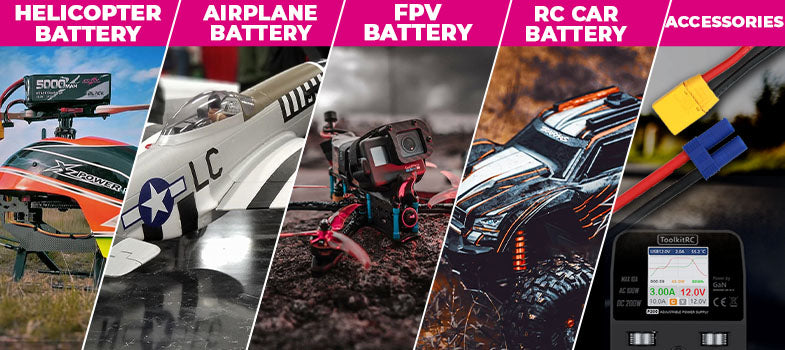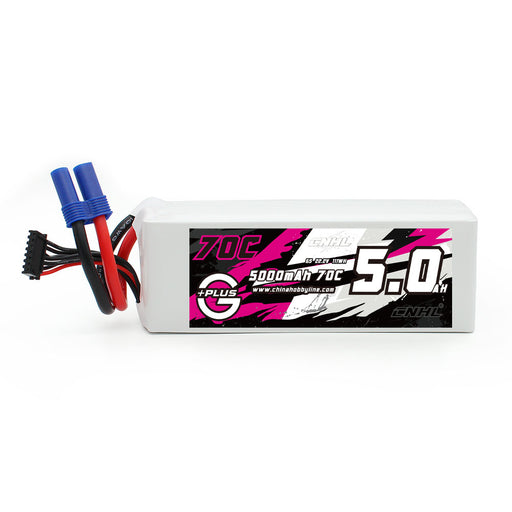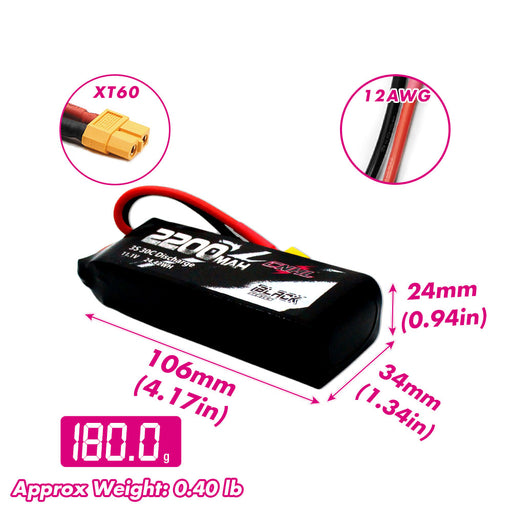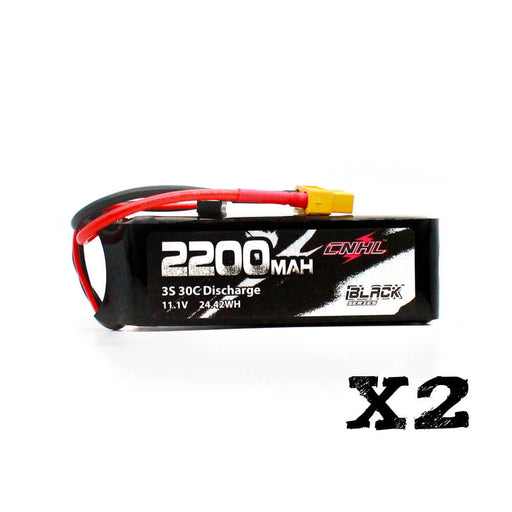
리포 배터리 충전 및 병렬 충전 방법
배터리는 FPV 취미에서 가장 지루한 부분이지만, 특히 시작하는 분들에게는 가장 중요한 부분 중 하나입니다.
이 블로그에서는 리포 배터리를 효율적이고 안전하게 충전하는 방법에 대해 이야기할 것입니다.
먼저, 한 번에 하나의 배터리를 충전하는 방법에 대해 이야기해 보겠습니다. 과정은 매우 간단합니다. 먼저 충전기를 연결하고, 그 다음에 이렇게 생긴 XT60 커넥터를 먼저 연결하세요.

그리고 밸런스 포트에서는 핀이 밸런스 포트와 올바르게 맞춰져 있는지 확인하세요. 보통 오른쪽에 있는 1번 핀부터 시작합니다.

왼쪽으로 이동하면, 이것은 배터리와 각 개별 셀의 전압을 읽을 수 있게 해줍니다. 제 충전기는 4s 배터리가 연결되면 자동으로 감지하여 올바른 전압으로 충전하도록 설정됩니다.

이제 충전기에 이 기능이 있든 없든 상관없이, 항상 셀당 4.2볼트까지 충전하는지 두 번 확인해야 한다는 점을 기억하세요. 그 이상으로 충전하면 심각한 문제가 발생할 수 있습니다. 참고용으로 차트도 여기 포함하겠습니다.

그래서 배터리가 몇 개의 셀로 구성되어 있는지에 따라 전체 Lipo가 얼마까지 충전되어야 하는지 알 수 있습니다.
| 1s | 4.2v |
| 2s | 8.4v |
| 3s | 12.6v |
| 4s | 16.8v |
| 5s | 21.0v |
| 6s | 25.2v |
그래서 배터리를 얼마나 충전해야 하는지 쉽게 알 수 있습니다. 항상 셀당 4.2볼트까지 충전하는 것이 목표입니다. 하지만 얼마나 빠르게 충전할지도 결정하는 것이 중요합니다. 많은 충전기가 다양한 속도로 배터리를 충전할 수 있지만, 빠르다고 항상 좋은 것은 아닙니다. 배터리를 충전하는 가장 안전한 방법은 1C, 즉 용량의 1배 속도로 충전하는 것입니다. 예를 들어, 1500밀리암페어시 또는 1.5암페어시 배터리를 1C로 충전하려면 1.5암페어로 충전하면 됩니다.

이것은 850밀리암페어시 또는 0.85암페어시 배터리이므로, 0.8에서 0.9암페어 사이로 충전하고 싶습니다.

다시 말하지만, 이것이 배터리를 충전하는 가장 안전한 방법입니다. 하지만 단점이 있는데, 배터리 크기에 상관없이 완전히 방전된 상태에서 1C 속도로 충전하면 시간이 매우 오래 걸립니다. 1C 속도로 충전하면 약 45분 조금 안 걸립니다. 저는 현재 8개의 배터리를 가지고 있어서, 만약 각각을 1C로 따로 충전한다면, 각 배터리가 45분 걸리므로 총 6시간 정도 걸릴 것입니다. 두 개의 포트가 있는 충전기를 사용해 한 번에 2개의 배터리를 충전할 수 있어도, 여전히 3시간이 걸립니다.
다행히도 속도를 높일 수 있는 두 가지 방법이 있습니다. 첫째, 전류를 증가시켜 1C로 충전하는 대신 2C, 즉 용량의 두 배 속도로 충전할 수 있는데, 이렇게 하면 두 배 빠르게 충전됩니다. 시간이 정말 촉박하다면 가끔 3C나 4C로 충전해도 괜찮다고 말하는 사람도 있지만, 충전 속도가 높을수록 위험이 커집니다. 충전 중에 아무 일이 없더라도 높은 C 등급으로 자주 충전할수록 배터리 수명이 더 빨리 줄어듭니다. 따라서 가능하면 1C 속도를 유지하는 것이 좋습니다. 정말 시간이 촉박하다면 2C까지 올릴 수 있지만, 긴급 상황이 아니면 그 이상은 피하는 것이 좋으며, 배터리가 인화성 물질과 떨어져 있고 Lipo 화재 위험을 감수할 준비가 되어 있어야 합니다.
전류를 높이고 싶지 않다면 병렬 충전을 선택할 수 있습니다. 병렬 충전은 아래 이미지와 같은 병렬 충전 보드를 사용하여 한 번에 한 충전기에서 충전할 수 있는 배터리 수를 늘리는 것을 의미합니다.

포트당 하나의 배터리를 충전하는 대신, 이 보드는 최대 6개까지 충전할 수 있게 해줍니다. 이제 배터리를 더 빠른 속도로 충전하는 것처럼, 병렬 충전도 잘못하면 약간 더 높은 위험을 초래할 수 있습니다. 그래서 충전하기 전에 반드시 몇 가지 사전 단계를 거쳐야 합니다. 먼저, 병렬 충전을 성공적이고 안전하게 하려면 모든 배터리의 셀 수가 같아야 합니다. 3셀 배터리를 4셀로, 4셀을 5셀로 충전해서는 안 됩니다. 만약 4셀 LiPo 배터리를 충전한다면, 모두 4셀인지 확인해야 합니다. 그렇지 않으면 충전기가 모든 배터리에 전류를 균등하게 분배하려고 하며, 작은 배터리가 과충전되어 매우 위험해집니다. 더 안전하게 하려면 보통 같은 브랜드와 모델의 배터리만 병렬 충전합니다. 다른 브랜드의 배터리는 약간 다른 조성을 가질 수 있고, 모든 배터리가 동일하다는 것을 확인하는 것만으로도 어리석은 실수를 피하기가 훨씬 쉽습니다.
다음으로, 함께 충전하려는 모든 배터리의 전압이 비슷한지 확인해야 합니다. 이상적으로는 이 보드에 연결할 때 모든 배터리의
정확히 같은 전압을 가지도록 해야 합니다. 앞서 말했듯이, 충전기는 네 개의 작은 배터리가 아니라 하나의 큰 배터리를 충전한다고 생각하기 때문에 전류를 균등하게 분배하고 균등하게 충전하려고 합니다. 전압이 다르면 일부 배터리가 과충전될 수 있는데, 이는 매우 위험합니다. 다행히도 약간의 여유가 있어서 셀당 최대 0.1볼트 차이까지는 함께 충전할 수 있습니다. 다시 말하지만, 이는 셀당 차이이므로 4셀 배터리 전체 전압은 최대 0.4볼트 차이까지 허용됩니다.
여기 4셀 배터리 8개가 있고, 그 전압은 다음과 같습니다.

이 배터리들은 병렬로 안전하게 함께 충전할 수 있고, 이 배터리들은 별도의 배치로 충전할 수 있습니다. 이 두 그룹 각각은 최대 0.4볼트의 전압 차이가 있어 안전하게 충전할 수 있습니다. 마지막 배터리는 전압 차이가 너무 커서 별도로 충전해야 합니다. 그렇지 않으면 이 배터리를 다른 배터리와 함께 충전할 경우, 한 배터리가 과충전될 위험이 있습니다.
이제 실제로 어떻게 하는지 보여드리겠습니다. 먼저 밸런스 보드를 연결하세요.

배터리를 밸런스 보드에 연결할 때는 밸런스 리드보다 먼저 이 XT60 커넥터를 연결하는 것이 권장됩니다. 하지만 모든 배터리의 전압이 비슷한지 이미 확인했다면, 어느 쪽이든 큰 문제는 아닙니다. 밸런스 리드를 연결할 때는 올바른 포트에 올바른 방향으로 연결하는지 확인하세요. 커넥터 한쪽에는 방향을 알려주는 작은 가이드가 있지만, 대부분의 보드에서는 배터리의 빨간 선이 안쪽에 위치하는 경우가 많습니다. 실수를 방지하고 단락을 피하기 위해 천천히 연결하세요.

또한 병렬 충전 보드에는 양쪽에 바운스 커넥터가 있을 텐데, 올바른 핀 수만 맞으면 어느 쪽에 꽂아도 상관없습니다. 꽂은 후에는 잠시 그대로 두는 것이 좋습니다. 만약 전압을 보여주는 충전기를 사용한다면, 각 배터리 간 전압이 점점 더 조절되어 이전보다 더 가까운 전압으로 균형을 이루는 것을 확인할 수 있을 것입니다. 몇 분간 안정된 후에 충전을 시작하면 됩니다. 병렬 충전 시에는 1C 속도를 넘지 않는 것이 좋지만, 단일 배터리의 1C와 4개의 배터리의 1C는 매우 다릅니다.
앞서 언급했듯이, 이 1500밀리암페어 배터리의 경우 1.5암페어의 전류가 필요합니다. 하지만 4개의 배터리를 1.5암페어로 충전하면 전력이 4개의 배터리에 나누어져 실제로는 각각 0.375암페어로 충전하게 됩니다. 이는 더 이상 1C가 아니라 약 0.25C에 해당합니다. 즉, 4배의 배터리를 동시에 충전할 때는 충전 전류도 4배로 늘릴 수 있으며, 충전기를 6암페어로 설정해 이 4개의 배터리를 충전할 수 있습니다. 충전기는 이 전류를 배터리들에 나누어 각각 1.5암페어씩 공급하며, 그렇게 간단합니다. 모든 배터리가 동시에 충전되고 충전이 끝나면 충전기가 배터리 내 모든 셀을 균형 조절합니다. 또한, 일부 충전기는 2개의 별도 포트나 채널이 있어 서로 완전히 독립적인 작업을 수행할 수 있다는 점을 덧붙이고 싶습니다. 채널 1에 연결된 것은 채널 2에 영향을 주지 않습니다. 사실상 두 개의 충전기가 하나로 합쳐진 것처럼 사용할 수 있습니다. 그래서 4셀 배터리를 나머지와 함께 충전하지 못했더라도 별도의 채널에 연결할 수 있고, 채널 1에서 일어나는 일은 채널 2에 영향을 주지 않습니다. 심지어 채널 2에 3셀 배터리를 연결해도 채널 1에서 병렬 충전 중인 4셀 배터리에 영향을 주지 않습니다. 단, 두 채널 모두 전원 공급원에서 끌어올 수 있는 최대 암페어 수를 공유한다는 점만 기억하면 됩니다. 즉, 충전기가 전원 공급원에서 끌어올 수 있는 최대 암페어 수가 정해져 있고, 채널 1과 2에서 동시에 진행되는 충전 전류 합계가 그 한도를 넘을 수 없습니다.

이 블로그는 여기까지입니다. 이 영상을 통해 무언가 배웠다고 느끼신다면, 공유해 주세요.

베스트 셀러즈
-
원래 가격 $65.99원래 가격 $65.99 - 원래 가격 $65.99원래 가격 $65.99$53.99 USD - $65.99 USD$53.99 - $65.99현재 가격 $53.99 USD
CNHL G+Plus 5000mAh 22.2V 6S 리포 배터리 70C EC5 플러그 포함
재고 10+개 이상 있습니다사양: 재고 번호: 500706EC5 용량: 5000mAh 전압: 22.2V / 6-셀 / 6S1P 방전율: 70C 연속 / 140C 순간 충전율: 최대 5C 크기(1-5mm 차이): 49X51X149mm(높이*너비*길이) 대략 무게(±5g) : 714g 출...
전체 세부 정보 보기원래 가격 $65.99원래 가격 $65.99 - 원래 가격 $65.99원래 가격 $65.99$53.99 USD - $65.99 USD$53.99 - $65.99현재 가격 $53.99 USD최대 18% 절약하세요 -
원래 가격 $38.99원래 가격 $38.99 - 원래 가격 $38.99원래 가격 $38.99$34.99 USD - $38.99 USD$34.99 - $38.99현재 가격 $34.99 USD
CNHL 스피디 피자 시리즈 프로 1350mAh 22.2V 6S 150C 리포 배터리 XT60 플러그 포함
단 10 개만 남았습니다사양: 재고 번호: 1351506PZ 용량: 1350mAh 전압: 22.2V / 6셀 / 6S1P 방전 속도: 연속 150C / 순간 300C 충전 속도: 최대 5C 크기(1-5mm 차이): 38X38X78mm 대략 무게(±5g) : 215g 출력 커넥터: X...
전체 세부 정보 보기원래 가격 $38.99원래 가격 $38.99 - 원래 가격 $38.99원래 가격 $38.99$34.99 USD - $38.99 USD$34.99 - $38.99현재 가격 $34.99 USD최대 10% 절약하세요 -
원래 가격 $51.98원래 가격 $51.98 - 원래 가격 $51.98원래 가격 $51.98$46.78 USD - $51.98 USD$46.78 - $51.98현재 가격 $46.78 USD
2팩 CNHL 블랙 시리즈 V2.0 1300mAh 22.2V 6S 130C 리포 배터리 XT60 플러그 포함
재고 10+개 이상 있습니다사양 재고 번호: 1301306BK 용량: 1300mAh 전압: 22.2V / 6-셀 / 6S1P 방전율: 130C 연속 / 260C 순간 충전율: 최대 5C 크기(1-5mm 차이): 48X33X77mm 대략 무게(±5g) : 210g 출력 커넥터: XT60 밸...
전체 세부 정보 보기원래 가격 $51.98원래 가격 $51.98 - 원래 가격 $51.98원래 가격 $51.98$46.78 USD - $51.98 USD$46.78 - $51.98현재 가격 $46.78 USD최대 10% 절약하세요 -
원래 가격 $43.98원래 가격 $43.98 - 원래 가격 $43.98원래 가격 $43.98$31.98 USD - $43.98 USD$31.98 - $43.98현재 가격 $31.98 USD
[Combo] 2팩 CNHL MiniStar 1500mAh 14.8V 4S Lipo 배터리 120C XT60 플러그 포함
재고 10+개 이상 있습니다사양: 재고 번호: 1501204 용량: 1500mAh 전압: 14.8V / 4셀 / 4S1P 방전 속도: 연속 120C / 순간 240C 충전 속도: 최대 5C 크기(1-5mm 차이): 37X33X76mm 대략 무게(±5g) : 169g 출력 커넥터: XT60...
전체 세부 정보 보기원래 가격 $43.98원래 가격 $43.98 - 원래 가격 $43.98원래 가격 $43.98$31.98 USD - $43.98 USD$31.98 - $43.98현재 가격 $31.98 USD최대 27% 절약하세요 -
원래 가격 $23.98 - 원래 가격 $37.98원래 가격 $23.98 - 원래 가격 $37.98원래 가격 $23.98$19.98 USD - $37.98 USD$19.98 - $37.98현재 가격 $19.98 USD
2팩 CNHL 블랙 시리즈 2200mAh 3S 11.1V 30C 리포 배터리 XT60 플러그 포함
재고 10+개 이상 있습니다사양: 재고 번호: 220303BK 용량: 2200mAh 전압: 11.1V / 3셀 / 3S1P 방전율: 30C 연속 / 60C 버스트 충전 속도: 최대 5C 크기(1-5mm 차이): 24X34X106mm 대략 무게(±5g) : 180g 출력 커넥터: XT60 ...
전체 세부 정보 보기원래 가격 $23.98 - 원래 가격 $37.98원래 가격 $23.98 - 원래 가격 $37.98원래 가격 $23.98$19.98 USD - $37.98 USD$19.98 - $37.98현재 가격 $19.98 USD최대 17% 절약하세요
새 항목
-
원래 가격 $225.00 - 원래 가격 $225.00원래 가격 $225.00$225.00 USD$225.00 - $225.00현재 가격 $225.00 USD
CNHL Havok 1000mm 고속 4S 스포츠 레이서 RC 비행기 PNP (고가시성 노랑/빨강 에디션)
단 9 개만 남았습니다CNHL Havok 1000mm 4S 스포츠 레이서 비행기 – 검증된 1m Havok 기체 기반 CNHL Havok 1000mm 4S 스포츠 레이서 RC 비행기 PNP는 일상적인 실용성을 포기하지 않으면서 아드레날린을 원하는 조종사들을 위한 1미터 폼 속도 ...
전체 세부 정보 보기원래 가격 $225.00 - 원래 가격 $225.00원래 가격 $225.00$225.00 USD$225.00 - $225.00현재 가격 $225.00 USD -
원래 가격 $120.00 - 원래 가격 $120.00원래 가격 $120.00$120.00 USD$120.00 - $120.00현재 가격 $120.00 USD
MNRC MN300 RTR 1/12 스케일 4WD RC 록 크롤러 오프로드 트럭 투스피드 변속기 포함
단 9 개만 남았습니다MNRC MN300은 1/12 스케일의 레디 투 런(RTR) 4WD RC 록 크롤러로, 가벼운 크롤링, 트레일 주행, 일상적인 오프로드 재미를 위해 만들어졌습니다. 전자장치가 설치된 상태로 조립되어 있으며, 7.4V 배터리와 USB 충전 케이블이 박스에 포함되...
전체 세부 정보 보기원래 가격 $120.00 - 원래 가격 $120.00원래 가격 $120.00$120.00 USD$120.00 - $120.00현재 가격 $120.00 USD -
원래 가격 $119.99 - 원래 가격 $119.99원래 가격 $119.99$119.99 USD$119.99 - $119.99현재 가격 $119.99 USD
VOLANTEX 스핏파이어 RC 비행기 4채널 6축 자이로 안정화 탑재 즉시 비행 가능
단 9 개만 남았습니다제2차 세계대전의 전설적인 영국 전투기에서 영감을 받은 VOLANTEX 스핏파이어 RC 비행기는 고전적인 전투기 외관과 현대적인 초보자 친화적 비행 제어를 결합했습니다. VOLANTEX의 검증된 400mm 플랫폼을 기반으로 제작된 이 즉시 비행 가능한 RC...
전체 세부 정보 보기원래 가격 $119.99 - 원래 가격 $119.99원래 가격 $119.99$119.99 USD$119.99 - $119.99현재 가격 $119.99 USD -
원래 가격 $122.99 - 원래 가격 $122.99원래 가격 $122.99$122.99 USD$122.99 - $122.99현재 가격 $122.99 USD
VOLANTEX BF109 RC 비행기 4채널 RTF – 자이로 및 XPilot 탑재 제2차 세계대전 전투기
단 9 개만 남았습니다VOLANTEX BF109 4채널 RC 비행기 RTF는 가장 상징적인 제2차 세계대전 전투기 중 하나를 컴팩트하고 초보자 친화적인 패키지로 선보입니다. 400mm 날개폭, 가벼운 EPP 폼 기체, 그리고 XPilot 자이로 시스템을 갖춘 이 전투기는 새로운 ...
전체 세부 정보 보기원래 가격 $122.99 - 원래 가격 $122.99원래 가격 $122.99$122.99 USD$122.99 - $122.99현재 가격 $122.99 USD -
원래 가격 $117.99 - 원래 가격 $117.99원래 가격 $117.99$117.99 USD$117.99 - $117.99현재 가격 $117.99 USD
Volantex RC 비행기 P51D V2 400mm RTF – 초보자를 위한 XPilot 안정장치가 탑재된 4채널 워버드
단 9 개만 남았습니다Volantex RC 비행기 P51D V2 RTF는 학습을 최대한 편안하게 할 수 있도록 설계된 컴팩트한 WWII 스타일 전투기입니다. 400mm 날개 길이, EPP 폼 구조, XPilot 6축 안정화 장치를 갖춘 이 Volantex RC 비행기는 초보자에게 ...
전체 세부 정보 보기원래 가격 $117.99 - 원래 가격 $117.99원래 가격 $117.99$117.99 USD$117.99 - $117.99현재 가격 $117.99 USD





















댓글
댓글 남기기